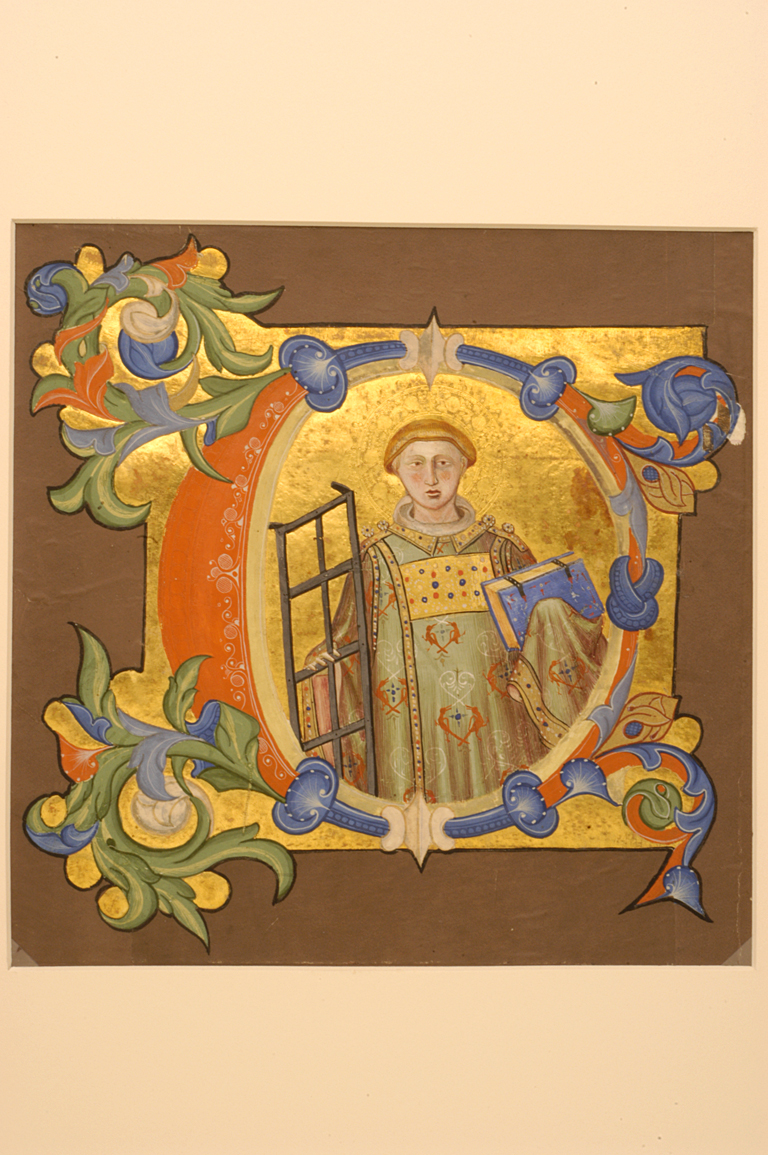Leaf from Antiphonary
1380-1390 (Early Renaissance)
Provenance
Provenance (from the French provenir, 'to come from/forth') is the chronology of the ownership, custody, or location of a historical object. Learn more about provenance at the Walters.
Provenance (from the French provenir, 'to come from/forth') is the chronology of the ownership, custody, or location of a historical object. Learn more about provenance at the Walters.
Olschki; Henry Walters, Baltimore [date of acquisition unknown], by purchase [inv. no. 32977 on back]; Walters Art Museum, 1931, by bequest.
Exhibitions
| 2019-2022 | Caravans of Gold, Fragments in Time: Art, Culture, and Medieval Trans-Saharan Exchange. Mary and Leigh Block Museum of Art, Northwestern University, Evanston; Aga Khan Museum, Toronto; National Museum of African Art, Smithsonian Institution, Washington. |
| 2005-2006 | Dressed in Gold: Books of the Italian Renaissance. The Walters Art Museum, Baltimore. |
| 1994-1995 | The Gothic Illuminators of Florence. The Metropolitan Museum of Art, New York. |
| 1989-1990 | Manuscript Painting in the Renaissance. The Walters Art Gallery, Baltimore. |
Conservation
| Date | Description | Narrative |
|---|---|---|
| 3/4/1975 | Treatment | stabilized |
Geographies
Italy, Florence (Place of Origin)
Measurements
Folio H: 8 1/4 x W: 7 7/8 in. (21 x 20 cm)
Credit Line
Acquired by Henry Walters
Location in Museum
Not on view
Accession Number
In libraries, galleries, museums, and archives, an accession number is a unique identifier assigned to each object in the collection.
In libraries, galleries, museums, and archives, an accession number is a unique identifier assigned to each object in the collection.
W.416


